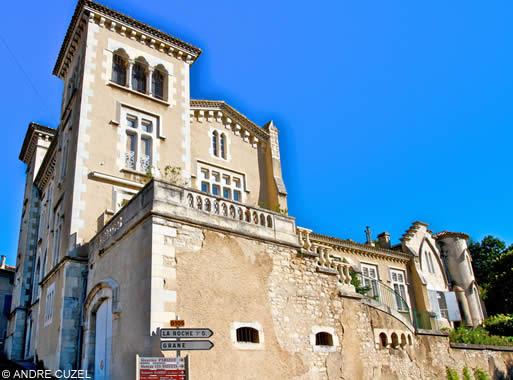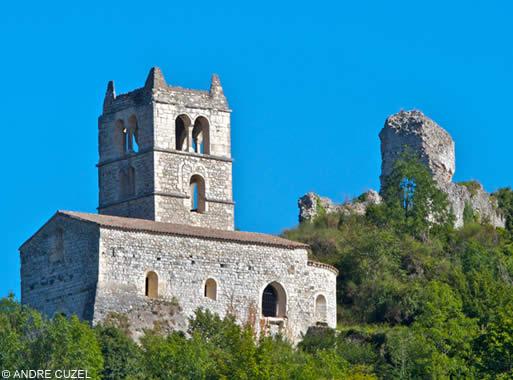

Fifteen kilometres from Montélimar and wonderfully far from the main tourist routes, Marsanne sits on a plain surrounded by wooded hills.
On one of those hills in the midst of this verdant and resolutely rural landscape, three towers seem to line up vertically, each one standing as stoically as a sentinel. At their feet, like a herd of sheep, old stone houses huddle together while others wander off towards the valley below. Welcome to the village of Marsanne where every corner, every nook holds some vestige of its long history and testifies to a rich past.
Visiting the village of Marsanne means going back in time. Starting with the “recent” part, built in the 19th century and comprising the town hall, the pyramid fountain and a church in a mix of different styles, we then move on to the dignitaries' houses and a castle, all from the 17th century. Continuing along the Rue du Comte de Poitiers, called La Côte (the Slope), we arrive at the first of our "sentinels", the imposing belfry with its bell and its clock. Straddling the Porte du Lachard Gate in a part of the old town walls, the belfry had been a watch tower in the Middle Ages and witnessed the handing over of the keys to the city to the future king Louis XIl in 1426.
From there, we enter the medieval quarter, a warren of steep little streets paved with shingles. Here and there, we can see such buildings as the 16th century rectory built against the old ramparts, the house of the Adhémar de Brunier family, the lords of Marsanne from 1582 to 1784, or the Saint-Claude Chapel, one of the oldest buildings in the village.

Let's take a break to admire the landscapes of the surrounding areas. And to catch our breath, because the climb continues, to the next "sentinel", the Saint Félix church built in the 12th century. This sublime edifice with its tall tower of white stones is today empty but, hauntingly beautiful, it still exudes an entrancing air.
That feeling continues as we reach the last of our "sentinels", the tower languishing on a crest that overlooks the town. The only remains of the old feudal castle, itself pitilessly worn away by the centuries, this solitary keep, blackened by the ages, seems to be haunted by a nostalgia for the time of the knights and the memory of its glorious past.
If Marsanne in itself is not enough to make you dream, outside the village the Notre-Dame de Fresneau chapel claims a few miracles. In the 11th century, a young blind girl dreamt that the Virgin Mary appeared and asked to have a chapel built devoted to her. A bit later, after drinking water from a spring at the spot indicated by Mary, the girl recovered her sight. Following that miracle, the chapel became a pilgrimage site. During the Crimean War, 20,000 pilgrims gathered here for a service during which many prayers for peace were said. That day, September 8, 1855, coincides with the victory of the Franco-British forces and in commemoration the chapel was given two Russian cannons seized in Sebastopol.
The area around Marsanne is covered in forest, great for hiking, and also vineyards. It is indeed the town of Marsanne that gave its name to the grape variety that goes into making the northern Côtes du Rhône wines
Art of living
Gastronomy, markets of Provence, regional products, Christmas traditions, celebrities of Provence....